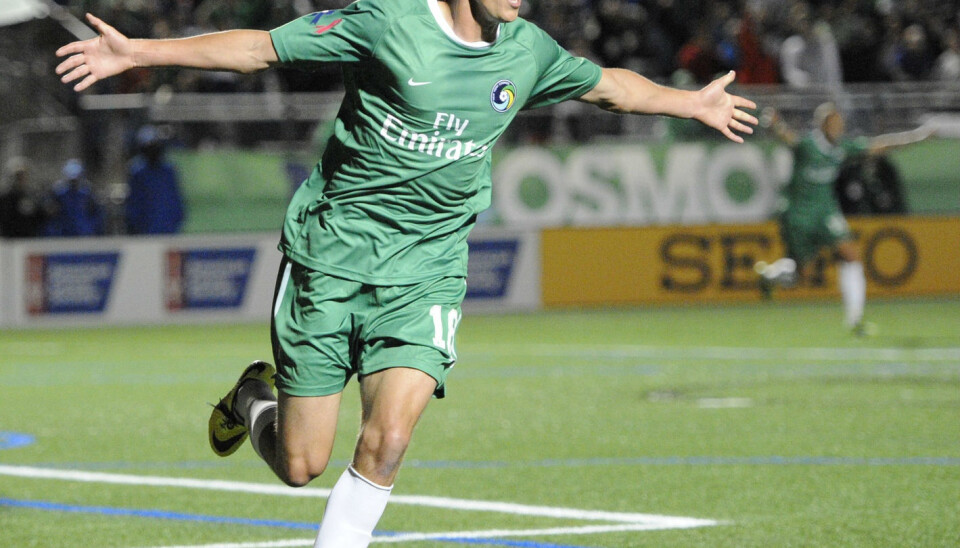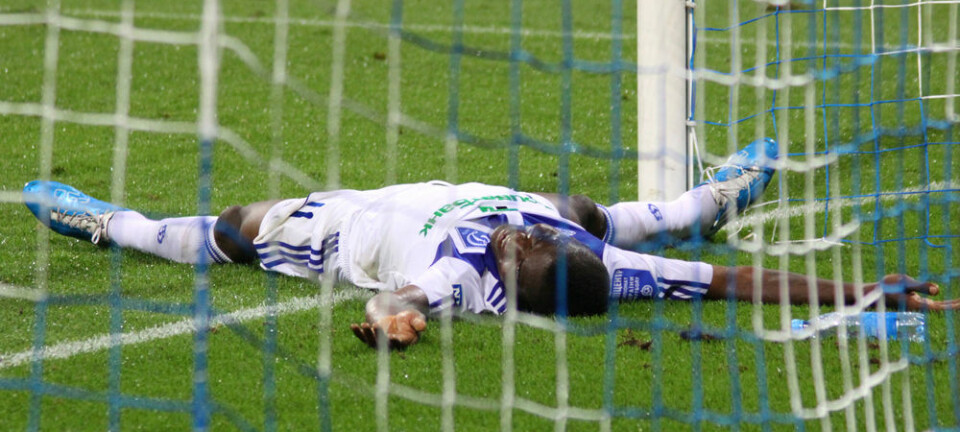This article was produced and financed by The Norwegian School of Sport Sciences

Screening footballers for heart risk is no guarantee
Recent findings concerning heart screenings may improve the examinations and reduce costs, but the methods still need to be refined. Mads Stokkelien, of the New York Cosmos, is not convinced screening all footballers is the right way to go.
Denne artikkelen er over ti år gammel og kan inneholde utdatert informasjon.
A footballer in his twenties suddenly collapses during a match. His heart has stopped beating. The medical staff rushes to his aid, his teammates wander restlessly back and forth and the crowd is silenced. The match is stopped but the broadcast continues. The drama is shown live to millions of viewers.
In 2008, multiple incidents of sudden cardiac arrest gathered a lot of press and the Union of European Football Associations (UEFA) implemented heart screenings; examining the heart of healthy individuals to look for medical conditions. The Football Association of Norway started screening all the players in Tippeligaen and Adeccoligaen. The players, support staff and fans should be reassured. Or should they?
“I am afraid not,” says physician and doctoral research fellow Hilde Moseby Berge at the Norwegian School of Sports Sciences.
“Screenings work if they are accurate and reliable but our methods are imperfect and uncertain as of today. The examinations will not identify all the serious cases and some of the individuals that are deemed to be at risk will be perfectly healthy.”
Moseby Berge has studied heart screenings of male footballers for several years. In September, she defends her doctoral thesis Det norske idrettshjertet.
Stokkelien questions screenings
Mads Stokkelien, from Norway, plays as an attacker for the New York Cosmos. He was screened prior to signing both of his professional contracts. After the alarming cases of sudden cardiac arrest, both in Norway and abroad, he welcomed the UEFA initiative as measure to care for the players. Having verified that everything was in order gave him a sense of security.
But after having read about the research and was informed of Moseby Berge's findings, he lost that sense of security. The professional footballer assumed, like most others, that the methods were effective and that the screenings helped to care for the players.
“I view the screenings in a different light than what I did previously. Maybe it is wrong to spend so much money on a measure that gives a false sense of security and could put unnecessary strain on those concerned,” Stokkelien says.
Drop the echocardiogram – monitor high blood pressure
A regular screening consists of three examinations: EKG (recording the electrical activity of the heart) while resting, ultrasound (echo test) of the heart and measuring blood pressure.
One of the most common causes of death on the football pitch is a heart attack. But EKGs while sitting still and echo tests do not reveal atherosclerosis of the arteries in the heart which may lead to a heart attack at a later date.
Moseby Berge studied the correlation between high blood pressure and heart disease, and she made an important discovery:
“Many of the players that were found to suffer from high blood pressure were not monitored later. After all, these were young, slim and fit individuals. But we found high blood pressure to be associated with changes in the players' hearts. It has been established that high blood pressure at an early age increases the risk of heart and cardiovascular disease. This is why is is important to monitor young players with high blood pressure.”
In addition, Moseby Berge and her colleagues found that echo tests, an ultrasound of the heart, are redundant.
“When we reviewed the examinations of the players, echo tests did not uncover any conditions that were not also detected by EKG and through measuring blood pressure,” she says.
Echo tests are administered by heart specialists while an EKG may be carried out by a doctor competent in EKGs. It is more convenient and less costly to conduct screenings without the use of echo tests.
This finding has been corroborated by researchers in London and Qatar. They also concluded that echo tests were unwarranted.
What is normal?
Correct EKG interpretation is challenging and requires certain qualifications which demand a lot of training.
“And, it is important to follow specific criteria for elite athletes. They may display variations not found in regular or inactive individuals,” she explains.
The doctoral research fellow has worked closely with professor Jonathan Drezner at the University of Washington in Seattle. He has developed athlete-specific EKG criteria, the so-called Seattle criteria. Using the standard criteria leads to positives in athletes that are actually not at risk. And this, in turn, may lead to unnecessary examinations. The Seattle criteria reduce the number of false-positives.
The Seattle criteria are available online for any doctor who wants to learn more about EKGs for athletes. At this point in time, only five Norwegians have completed the training, which is a concern for Moseby Berge.
“I would really like to see an increased number of doctors completing the online training because they need to know what criteria to follow. If not, it is difficult to distinguish what are normal findings and what are abnormalities when screening sports teams.”
Screenings are here to stay
Mads Stokkelien wants to see reliable and effective heart screenings.
“Elite athletes push their bodies to the limit. Due to the great strain they are subjected to, it would be reassuring to know that they can withstand the stress. I would like them to develop an improved screening method to continue the procedure of testing all elite athletes without giving them a false sense of security.”
Hilde Moseby Berge agrees.
“We have improved protocols for EKG interpretation and modern EKG machines make us more positive, but this measure will not identify everyone at risk of heart disease.”
She stresses that the players need to be vigilant and pay close attention to the warning signs.
Mads Stokkelien believes that the athletes approve of the decision to screen all footballers. Most of them assume that it is an effective measure to prevent cardiac arrest.
“But they are most likely unaware of the fact that the examinations being used today may provide uncertain and imperfect conclusions.”
The doctoral research fellow is confident that heart screenings are here to say. But regretfully, we lack sufficient scientific research material to recommend screening all athletes for heart conditions at this time.
“When improved methods emerge, we should start screening the most prolific elite athletes, those training more than ten hours a week.”
“To begin with, the most important measure is to implement CPR training and make sure heart starters are made available. This is known to save lives.”

































